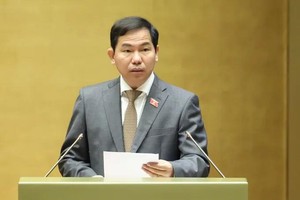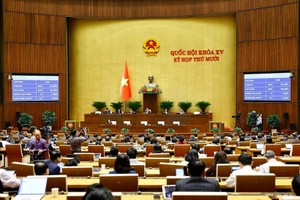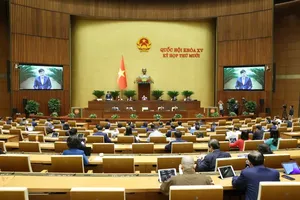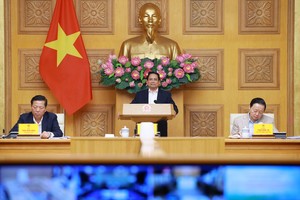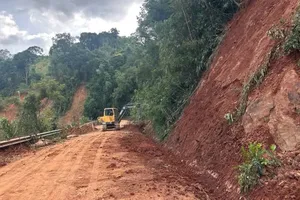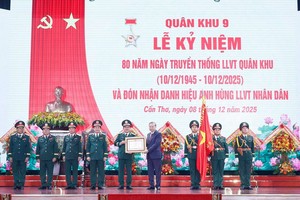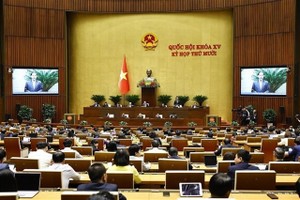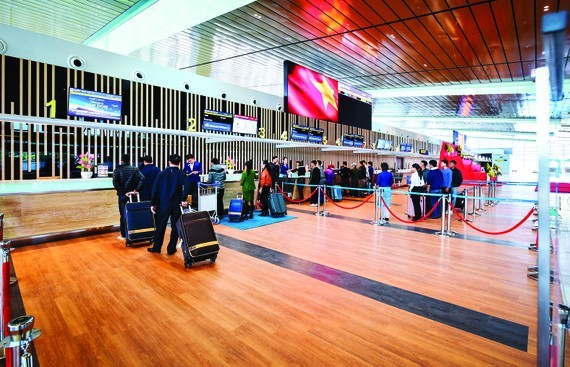
When being asked about the more profitable investment model between constructing a new large-scaled Van Don Airport and building various small-scaled airports in different localities, Director Le Do Muoi first stressed that Vietnam has achieved an impressive breakthrough mobilizing social resources in constructing Van Don Airport. He then mentioned that the world is applying 8 specific airport models depending on demands and locations, and so should Vietnam.
Evaluating the demands and potentials of the country and analyzing experience gained from building Van Don Airport, it is advisable that Vietnam implement the Public-Private Partnership (PPP) investment model or the franchise one where the State assigns the private sector to invest in the construction stage and then own the right to exploit the terminals and parking areas while the State still control the airfields.
Other models like stock equitization of less than or more than 50 percent of the investment have shown inadequacies and created difficulties for investors. The PPP and franchise models can encourage these people, and thus bringing about more effectiveness.

Discussing whether it is necessary to screen and select true investors who aim at doing business or not, the Director commented that observing the planning is an even better choice. There must be an overall development frame for the locality and the whole region based on real demands of local habitants.
Investors then need to study and review their measures as a role of a businessperson, not a mere sponsor since the needed payback time is not short-term. With the planning at hand and demands identified, no investors mean a suspended planning state.
There are PPP, public investment, and specialized aviation laws to create a strong legal corridor for investment attraction. Investment in the aviation field is quite new and the State is trying to provide necessary support for needy localities to prepare for the next steps.
As many people are still confusing between the concepts of airport and airbase, Director Muoi explained that the former is for public use and is under the management of the Transport Ministry whereas the latter, under the management of the National Defense Ministry, serves narrower-scaled economic zones within a province and is specialized rather than public.
At present, all construction proposals of provinces are for airbases. If upgraded into an airport, those airbases must satisfy 6 criteria, the first two of which are the most important to ensure the cargo transport demands and a distance of around 100km from the downtown area. Based on these 6 criteria, in 2030, Vietnam will have about 28 airports.
Lately, Prime Minister Pham Minh Chinh has signed Decision No.1121/QD-TTg to establish a task force to study and evaluate the overall capacity of civil aviation exploitation in military airbases of Thanh Son in Ninh Thuan Province, Bien Hoa in Dong Nai Province. The task force will also research the possibility of applying the PPP model for the airports of Na San in Son La Province, Vinh in Nghe An Province, Chu Lai in Quang Nam Province, Can Tho in Can Tho City, and other similar airports when needed.
The draft result of airports and airbases in the 2021 period, with a vision to 2050, states that Vietnam is going to have 14 international airports of Van Don, Cat Bi, Noi Bai, Tho Xuan, Vinh, Phu Bai, Da Nang, Chu Lai, Cam Ranh, Lien Khuong, Long Thanh, Tan Son Nhat, Can Tho, and Phu Quoc.
There will also be 14 domestic airports of Lai Chau, Dien Bien, Sa Pa, Na San, Dong Hoi, Quang Tri, Phu Cat, Tuy Hoa, Pleiku, Buon Ma Thuot, Phan Thiet, Rach Gia, Ca Mau, and Con Dao.


